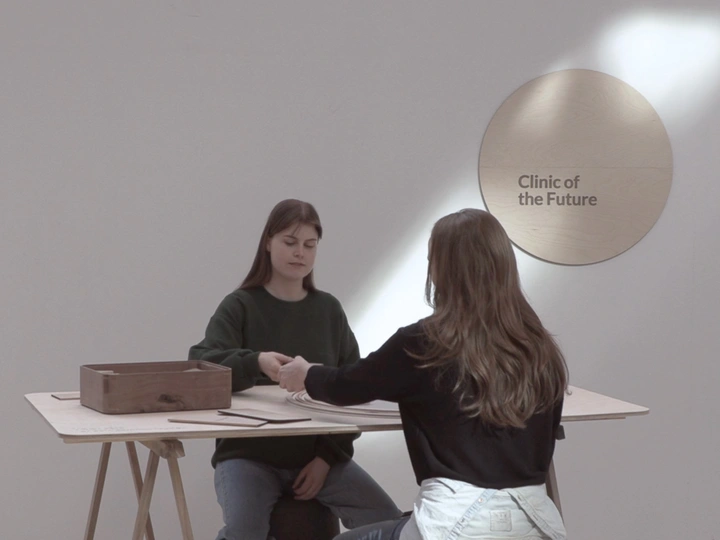Clinic of the Future

Background
I’m Amy van den Hooven, a designer focused on health and well-being. I have a diverse background in spatial, product, and discursive design, with a Bachelor's in Environmental Design from the University of British Columbia and a Master's in Design from the University of Bergen. Currently, I work as a Design Researcher at Health Bergen and co-teach master's courses in the Department of Design at the University of Bergen.
When I was 19, I was diagnosed with an auto-immune disease, and this personal journey, along with meeting others facing health challenges, has shown me the significant role that a person's environment plays in their well-being. Unfortunately, this aspect is often overlooked in Western medicine today. This platform would provide an opportunity to focus on the environmental aspect of health and well-being.
Open Pain Lab
In 2019, I launched the Open Pain Lab, a collaborative design initiative aimed at bringing pain to the forefront of health design. During my master's program, I developed the project "Re-Imagining Pain Communication." Through an in-depth collaborative design process, I created a toolkit full of tactile and visual objects to help people communicate the complexities of their pain experiences, considering emotional, physical and biological aspects of pain. This project has earned recognition with various awards (https://www.openpainlab.com/projects/paintoolkit) and is continually being developed and tested.
My Vision
Looking ahead, I'm inspired to re-imagine a clinic that considers a person's whole illness experience. In the last chapter of my thesis, I presented a vision of the clinic of the future, which I would like to build upon and expand. After learning about LINA, I'm particularly interested in exploring how environmental factors impact health and well-being, drawing on my strengths in both environmental and health-related design. I wonder, what could the clinic of the future look like?
The word "clinic" often causes one to picture a medical setting where one seeks out care. This word has been taken over by the Western medical world, but I would like to rethink what the word "clinic" can mean. What if the clinic can be a space for creative dialogue about the complex layers of pain? These layers could include the environmental and social impacts on human health and pain.
I believe it is not a coincidence that the increase in chronic diseases and the degradation of the environment coincide. There are biological, social, and environmental components that need to be more considered in the way we care for humans. If we connect people to healthy environments, could it improve human health? Could bringing awareness to the connection between human and environmental health empower more people to want to take care of our environment?
I would like to explore ways to create dialogue about these complex topics through hands-on and interactive workshops. I would also like to explore how the design of a space can encourage dialogue and allow a person to feel safe to delve into these personal and sometimes intimidating topics.
What inspired this idea? Through my personal, university, and work experience, I have learned about how the medical field is often focused solely on the biological aspects of human health. The goal is often "precision medicine," which means understanding a disease at a cellular level and finding a treatment to target those cells. This approach can have many benefits in treating diseases; however, it can also cause many other aspects that contribute to human health to be ignored. These aspects, such as social (i.e., connection to community) and environmental (i.e., connection to nature) factors, are fundamental human needs that are often not met. I would like to use design to shed light on these complexities of human and environmental health and to help broaden perspectives on what care for humans means.